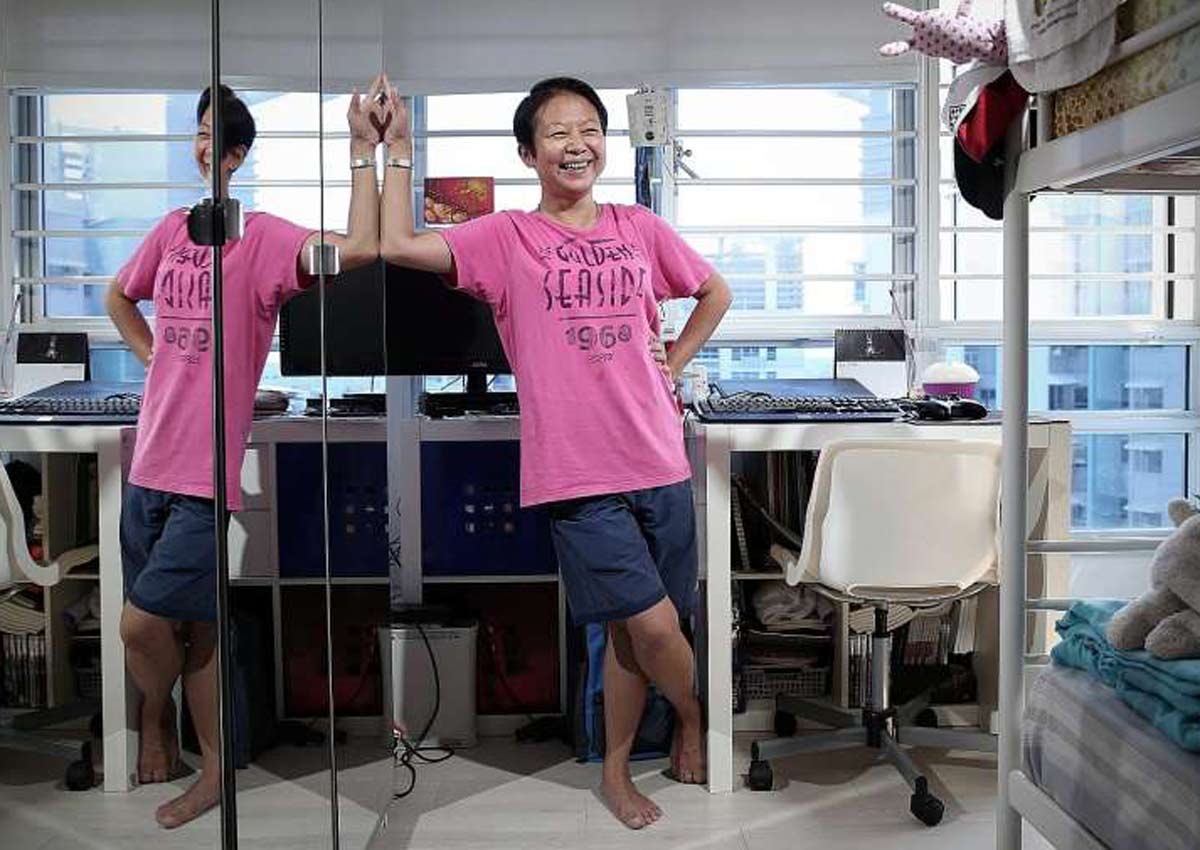Ms Kathy Goh first took heroin in her 20s to challenge her then boyfriend to quit the drug, only to begin her own vicious circle of addiction and recovery.
She first went to prison when she was 29, barely four months after giving birth to her son, and has been in and out of jail thrice in around 15 years.
She struggled to stay free of drugs and alcohol, despite a stint at a halfway house, three detoxification programmes with the National Addictions Management Service (Nams) and the support of her family.
Her efforts paid off only after almost a year-long stay at transitional shelter iCare Hub, nestled in a quiet housing estate in Balestier.
It is among the first of its kind to offer a secular residential programme for former offenders who are women, supporting them as they rebuild their lives.
And there is demand for its services, said Ms Grace Wong, 54, who is the centre’s co-founder and executive director.
More than 20 women completed stays at iCare last year, Ms Wong said, but it received more than 40 referrals in the same period, and over 100 inquiries. Such referrals may come from organisations such as family service centres or the Institute of Mental Health.
In line with a rise in drug abusers nabbed last year, the number of female drug abusers arrested rose from 452 in 2012 to 524 last year, based on data from the Central Narcotics Bureau (CNB).
The increase last year was largely due to more new, young abusers. The CNB said most new drug addicts, as well as new female drug abusers, are below 30 years old.
Ms Goh, 46, quit heroin about six years ago, after her last prison stay, and has stayed clean so far – the longest stretch ever.
She stayed at iCare two years ago on the recommendation of Ms Wong, who was her counsellor.
The centre, which opened in 2013 and officially introduced a residential programme last year, can take up to 12 residents. Residents may stay for a few months to a year as they try to secure permanent housing and a stable job. Within a month, the centre helps to find employment for former inmates as well.
Many of its residents are hardcore former drug offenders who have been through at least one long-term sentence, said Ms Wong.
This means at least five years’ jail and three strokes of the cane. Close to 80 per cent are former addicts, many with multiple addictions.
Ms Wong said that while there are many drop-in centres and temporary shelters for former offenders, a residential facility with minimal supervision can be “extremely helpful” in the first six months after release from prison or a halfway house, when they may be tempted to return to their old ways.
Ms Goh resolved to start anew after her release, wanting to repay her family who raised her son while she was in jail. He is now a 17-year-old student at the Institute of Technical Education.
For almost a year, she worked from home as an events coordinator while caring for her elderly mother who has dementia.
But she soon found herself buckling under the pressure of being a caregiver while adapting to her new job and life.
She started drinking again, thinking: “I cannot take drugs, so… maybe I can drink.”
From one to two cans of beer a day, she said, she was soon finishing a six-pack every day, spending around half her monthly salary of about $1,200 on alcohol.
This added strain to her relationship at home. While she took up stay-in programmes at Nams, the three-week stints were too short for her.
She later decided to move into iCare and, after her stint there, has kicked the addiction.
“I knew that I could not break the house rules and became more self-aware,” she said.
“Some might find this restrictive, but it is to help us understand that in life, we also need to have some structure and discipline.”
Now, she visits the centre occasionally and hopes to encourage others with her story. Learning about addiction over the years has helped her realise that it can be controlled, she said.
“It is not easy, but it is a journey. Every day, every time, every minute, I have to overcome it.”

This article was first published on May 15, 2016.
Get a copy of The Straits Times or go to straitstimes.com for more stories.






